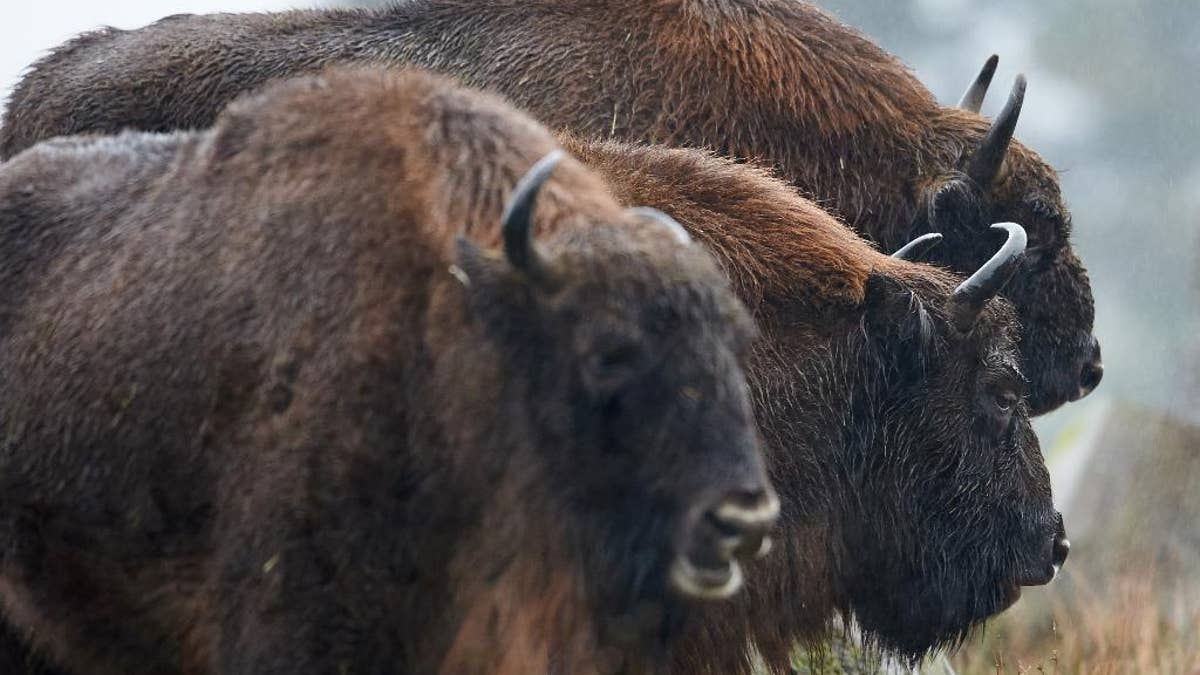DNA study reveals European bison's extinct parentage
{{#rendered}} {{/rendered}}
FILE - In this Jan. 12, 2016 file picture three European bisons, also known as Wisents, are pictured in their enclosure in Bad Berleburg, Germany. Scientists say they have unlocked the origins of the European bison _ and solved a riddle posed by Stone Age cave art in the process. European bison, also known as wisent, first appeared seemingly out of nowhere almost 12,000 years ago and are distinct from their American counterpart. (Bernd Thissen/dpa via AP,file) (The Associated Press)
Scientists say they've unlocked the evolutionary origins of the European bison — and solved a riddle posed by Stone Age cave art in the process.
European bison, or wisent, first appeared almost 12,000 years ago and are distinct from their American counterpart.
By analyzing DNA taken from ancient remains, researchers discovered a previously unknown animal that emerged when two extinct species — steppe bison and Aurochs, the ancestors of modern cattle — interbred about 120,000 years ago.
{{#rendered}} {{/rendered}}The hybrid eventually evolved into the present-day wisent, the researchers concluded in their study published online Wednesday by the journal Nature.
Filling the gap in the wisent's evolutionary history helped explain why two distinct types of bison — one with long, one with short horns — have been found in ancient cave paintings.
